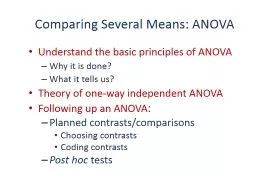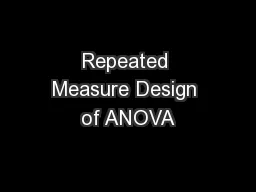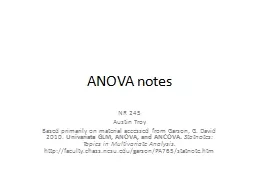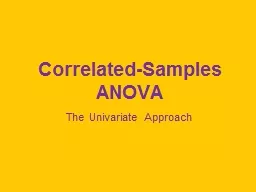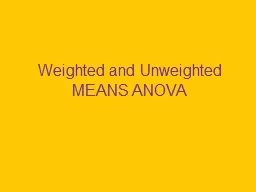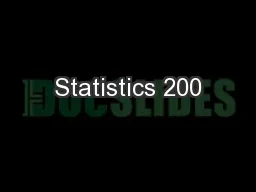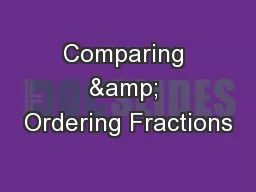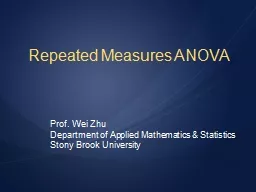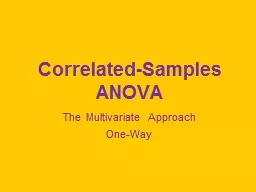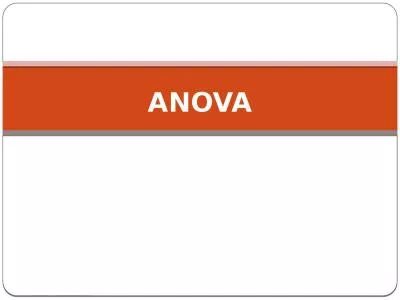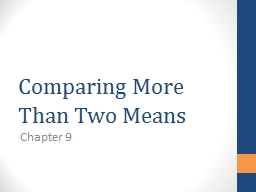PPT-Slide 1 Comparing Several Means: ANOVA
Author : alexa-scheidler | Published Date : 2018-09-25
Understand the basic principles of ANOVA Why it is done What it tells us Theory of oneway independent ANOVA Following up an ANOVA Planned contrastscomparisons Choosing
Presentation Embed Code
Download Presentation
Download Presentation The PPT/PDF document "Slide 1 Comparing Several Means: ANOVA" is the property of its rightful owner. Permission is granted to download and print the materials on this website for personal, non-commercial use only, and to display it on your personal computer provided you do not modify the materials and that you retain all copyright notices contained in the materials. By downloading content from our website, you accept the terms of this agreement.
Slide 1 Comparing Several Means: ANOVA: Transcript
Download Rules Of Document
"Slide 1 Comparing Several Means: ANOVA"The content belongs to its owner. You may download and print it for personal use, without modification, and keep all copyright notices. By downloading, you agree to these terms.
Related Documents

